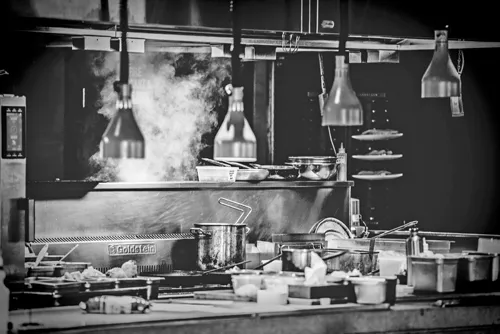
Managing People in Commercial Kitchens
A Contemporary Approach
Charalampos Giousmpasoglou, Evangelia Marinakou, Anastasios Zopiatis, John Cooper
- 176 Seiten
- English
- ePUB (handyfreundlich)
- Über iOS und Android verfügbar
Managing People in Commercial Kitchens
A Contemporary Approach
Charalampos Giousmpasoglou, Evangelia Marinakou, Anastasios Zopiatis, John Cooper
Über dieses Buch
Managing People in Commercial Kitchens: A Contemporary Approach uses original research to argue that senior managers (head chefs) should differentiate their people management practices in kitchen brigades from those used in the hospitality industry more generally (induction, socialisation, and performance evaluation) due to the group's strong occupational identity and culture.
The understanding of chefs' work from a management perspective is critical for successful hospitality operations but has been historically under-researched. Chapters provide a detailed account of chefs' work in commercial kitchens from an HRM perspective. Using occupational identity and culture as a vehicle, this book explores the different aspects of managerial work in commercial kitchen settings: general management, leadership, education and training, skills and competencies, managing deviant behaviour, managing stress, and managing diversity (focused on gender segregation). The final chapter looks at future perspectives on this unique working environment and the many challenges arising from the latest developments such as the COVID-19 pandemic.
Providing both theoretical insights and practical applications with the use of case studies throughout, this will be of great interest to upper-level students and researchers in hospitality, as well as a useful reference for current managers in the field.
Häufig gestellte Fragen
Information
1 The commercial kitchens’ structure and organisation

Introduction
The restaurant and foodservice industry – an overview

Structure of the restaurant and foodservice industry

| Menu Type | Description and Examples |
|---|---|
Local cuisine | Restaurants that use only ingredients from the local area and in the appropriate season. |
National cuisine | Restaurants focused on national cuisines i.e., Italian, Mexican, Greek, and Chinese. |
Ingredient dominated | Restaurants focused on a single dominant ingredient i.e., meat, fish, or vegetables. |
Theme concept | Restaurants based on a themed concept i.e., Hard Rock Café, TGI Friday’s, Planet Hollywood |
Healthy eating | Restaurants focused on healthy eating i.e., plant-based, vegan, and vegetarian. |
Cooking style | Restaurants focused on a particular cooking method, i.e., Nouvelle cuisine, haute cuisine, and molecular cuisine. |
Chef-centric | Restaurants focused on the name and style of celebrity chefs such as Gordon Ramsay, Nobu Matsuhisa, and Heston Blumenthal. |
| Source: adapted from Davis et al. (2018, p. 38) | |
| Service Style | Description |
|---|---|
Fine dining  | Represent luxury dining at the highest quality of ingredients and cooking techniques served with a degree of formality. Often associated with the Michelin star system. |
Molecular gastronomy  | Describes the combination of food with science using technical advances in equipment and ingredients. Often associated with fine dining restaurants. |
Casual dining  | Known as “family” dining or “popular” dining, with a relaxed style of service; there are two distinctive types of casual dining restaurants:
|
Quick service  | Known as fast-food restaurants, with limited menus and automated; in most cases food preparation and orders taken and delivered at a counter. |
Public houses & gastro pubs  | Licensed establishments primarily for drinking alcoholic beverages, sometimes incorporating the offer of a variety of foods. |
Coffee/ tea shops  | Orders are placed and delivered at the counter, the centrality of the business is coffee and/or tea and light choices of food/snacks. |
Takeaway  | Food is prepared for takeaway only, in fixed, mobile, or popup units i.e., festival and events food stalls. It is not uncommon to combine with fast casual dining or quick service restaurants. |
| Source: adapted from Davis et al. (2018, p. 43) and Cousins (2019, p. 17) | |